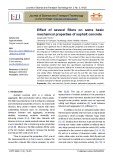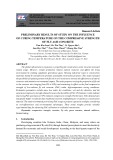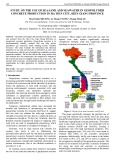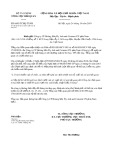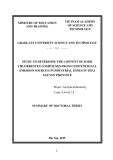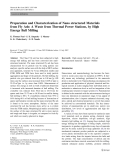
Fly ash
-
This paper presents the results of laboratory experiments to determine the influence of 4 different fillers (including conventional stone powder, Portland cement, rice husk ash, and fly ash) on some mechanical properties of asphalt concrete with Dmax of 12.5 (AC12.5).
 8p
8p  viengfa
viengfa
 28-10-2024
28-10-2024
 3
3
 2
2
 Download
Download
-
The study recommends prioritising FAC usage in projects exposed to sunlight, considering its cost-effectiveness and environmental advantages. These initial insights provide valuable experimental data for advancing FAC utilisation in residential construction.
 14p
14p  viaburame
viaburame
 14-03-2025
14-03-2025
 4
4
 1
1
 Download
Download
-
The article investigates the potential of using sea sand and seawater from Ha Tien City, Kien Giang Province, in geopolymer concrete production. Geopolymer concrete is an environmentally friendly material that can help reduce greenhouse gas emissions while utilizing locally available resources.
 5p
5p  vibenya
vibenya
 31-12-2024
31-12-2024
 11
11
 2
2
 Download
Download
-
Bài giảng Ứng dụng tro bay (fly ash) trong công nghiệp bêtông - Ứng dụng xỉ sắt (slag) trong công nghiệp bêtông của TS. Bùi Lê Anh Tuấn bao gồm những nội dung về vật liệu Pozzolan; tro bay; xỉ sắt; bêtông bền vững; một số công trình có sử dụng tro bay ở Đài Loan.
 41p
41p  ngochoc
ngochoc
 27-11-2015
27-11-2015
 151
151
 23
23
 Download
Download
-
Công văn số 6693/TCHQ-TXNK năm 2019 về trả lại hồ sơ xác định trước mã số hàng hóa do Tổng cục Hải quan ban hành. Mời các bạn cùng tham khảo chi tiết nội dung công văn.
 1p
1p  jiangwanyin
jiangwanyin
 02-06-2020
02-06-2020
 14
14
 2
2
 Download
Download
-
Research objectives of the thesis: Study the process of simultaneous determination and evaluation of the method of analyzing 7 chlorobenzene, including 1,2- 4 dichlorobenzene (1,2-DCB); 1,3-dichlorobenzene (1,3-DCB); 1,2,4- trichlorobenzene (1,2,4-TCB); 1,2,3,4-tetrachlorbenzene (1,2,3,4- TeCB), 1,2,4,5-tetraclobenzene (1,2,4,5-TeCB); pentaclobenzene (PeCB) and hexaclobenzene (HCB) in trace and superficial content in flue gas samples and industrial waste (fly ash, bottom ash, input materials).
 26p
26p  xacxuoc4321
xacxuoc4321
 08-07-2019
08-07-2019
 55
55
 9
9
 Download
Download
-
Tuyển tập báo cáo các nghiên cứu khoa học quốc tế ngành hóa học dành cho các bạn yêu hóa học tham khảo đề tài: Preparation and Characterization of Nano structured Materials from Fly Ash: A Waste from Thermal Power Stations, by High Energy Ball Milling
 8p
8p  sting10
sting10
 07-03-2012
07-03-2012
 69
69
 5
5
 Download
Download
-
Bê tông tính năng cao (HPC) có những tính năng vượt trội về cường độ và tính bền so với bê tông thường. Các hỗn hợp bê tông tính năng cao luôn luôn được sản xuất với các tỷ lệ nước/chất kết dính thấp trong khoảng 0.2 đến 0.4 và có sự kết hợp cao với các thành phần hoạt tính pozzolan như silica fume (SF), fly ash (FA) và slag. Do đó nó không thể tránh khỏi sự thay đổi thể tích trong bê tông bởi hiện tượng co khô, tự co, phản ứng hóa học và sự thay đổi nhiệt độ. Biến...
 7p
7p  hoa_thuyvu
hoa_thuyvu
 21-10-2011
21-10-2011
 121
121
 14
14
 Download
Download
-
Toxic heavy metals, i.e. copper (II), lead (II) and cadmium (II), can be removed from water by metallurgical solid wastes, i.e. bauxite waste red muds and coal fly ashes acting as sorbents. These heavy-metal-loaded solid wastes may then be solidified by adding cement to a durable concrete mass assuring their safe disposal. Thus, toxic metals in water have been removed by sorption on to inexpensive solid waste materials as a preliminary operation of ultimate fixation. Metal uptake (sorption) and release (desorption) have been investigated by thermostatic batch experiments.
 11p
11p  tudoia
tudoia
 06-04-2011
06-04-2011
 130
130
 8
8
 Download
Download
CHỦ ĐỀ BẠN MUỐN TÌM









